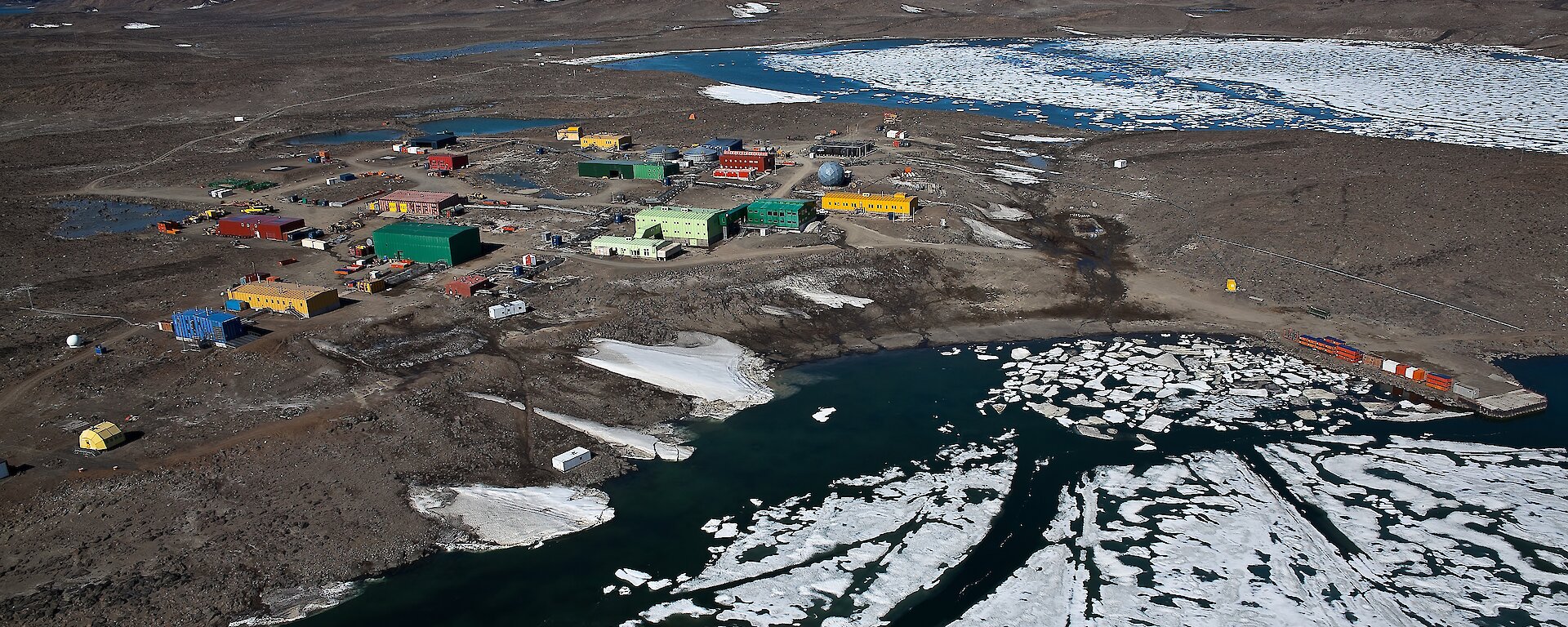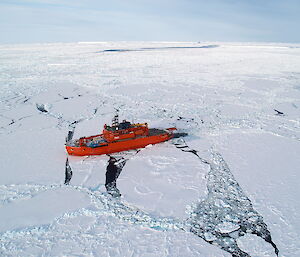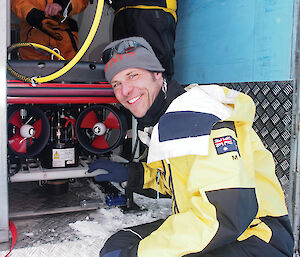Final preparations are underway for the start of Australia’s Antarctic summer season tomorrow, with one of the key projects travelling south to study the frozen continent as it wakes from winter.
A remotely operated underwater vehicle (ROV) has been loaded onto the Aurora Australis for the 4800km voyage to Davis station in East Antarctica, where it will be deployed under the ice to study early season algae growth on fast ice — the sea ice attached to land.
Australian Antarctic Division Operations Manager, Robb Clifton, said the 2015–16 season promises to be busy, with more than 400 expeditioners travelling south as part of the Australian Antarctic programme.
“This season, Australia is collaborating with 28 countries and 178 international institutions on 94 individual science projects,” Mr Clifton said.
Dr Klaus Meiners, of the Australian Antarctic Division and Antarctic Climate and Ecosystems Cooperative Research Centre, will lead the fast ice project. The team will use the ROV to help improve their understanding of ice algae, an important food source for tiny herbivores such as amphipods and zooplankton, which in turn are prey for animals such as penguins and seals.
“Ice algae begins growing earlier than algae in the water column and scientists think this early season productivity in the fast ice may be responsible for kick-starting the entire Antarctic food web,” Dr Meiners said.
“This makes the location and distribution of ice algae important when it comes to the foraging habits of larger predators and understanding the effects of fast-ice algae growth on different scales is important if we are to understand the impacts of changes to the ecosystem more broadly.”
The ROV will use a range of sensory equipment to carry out weekly observations of the physical and biological properties of the fast ice during the transition period from spring to summer.
Scientists will combine these observations with ‘point measurements’ from ice cores taken within and outside the ROV survey areas. These core samples will measure the physical, chemical and optical properties of the fast ice, the thickness and structure of snow cover on the ice, and abundance of algae in the ice.
Mr Clifton said another major project of the season is a multi-nation marine science voyage.
“In January, the Aurora Australis will travel to the Kerguelen Axis in the Indian Sector of the Southern Ocean where scientists will assess habitats, productivity and food webs.
“The Aurora Australis will be joined by four other research vessels that will undertake complementary science in the region, including the CSIRO’s RV Investigator and ships from France, Japan and the United States.”
French vessel L’Astrolabe is also scheduled to depart tomorrow, dropping supplies and expeditioners at Macquarie Island on its way to the French station Dumont D’Urville in East Antarctica.
“The departure of the L’Astrolabe from Hobart further highlights Tasmania’s role as the gateway to Antarctica and offers valuable opportunities for logistical collaboration between Australia and France,” Mr Clifton said.
The Aurora Australis is scheduled to return from Davis station in late November, with three more resupply voyages visiting Casey, Mawson and Macquarie Island stations in turn; delivering fuel, supplies and expeditioners for the year ahead.




